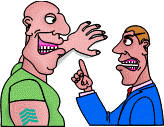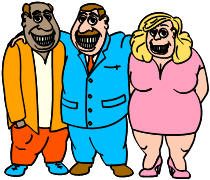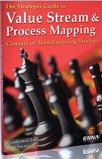|
 Resolving
conflict constructively is the most critical of team skills. Without this ability, the team
cannot develop the trust and bonding that allows moving from the Storming stage into peak
performance. Conflict resolution is not a stand-alone skill. There are specific techniques and
attitudes that are helpful, but conflict resolution interrelates with other skills. Resolving
conflict constructively is the most critical of team skills. Without this ability, the team
cannot develop the trust and bonding that allows moving from the Storming stage into peak
performance. Conflict resolution is not a stand-alone skill. There are specific techniques and
attitudes that are helpful, but conflict resolution interrelates with other skills.
Teamwork usually evokes a vague mental picture of cooperation and polite discussion. However,
true teams exhibit a high level of social structure. Their members have specific behaviors that
move the group towards specific goals.
An absence of overt conflict, for example, is often mistaken for teamwork. But conflict is
natural, even desirable. If conflict is not visible, either people are thinking alike or they
have suppressed conflict. Neither situation is helpful.
Effective teams gain power from divergent thinking, attitudes and experience. Without this
variety, conflict is lessened but the results are less effective. Teams that suppress conflict
also lose effectiveness and the conflict eventually erupts in destructive ways.
Learned Conflict Skills
Communication Skills
Good communication skills prevent conflict or destructive escalation. Many of us do not
communicate well. Sometimes our body language does not fit our verbal messages creating a
cognitive dissonance in the listener. We may personalize issues. We may criticize people rather
than actions, behaviors, or situations.
 Listening effectively is the other half of good communication. The most common deficiency is
letting our mind race ahead of the speaker's voice. We may use this speed difference to
formulate responses or defenses. Or we may allow our mind to wander on other subjects and miss
part of what is said. This is, at best, frustrating for the speaker. It also leads to
misunderstandings. Team members must train their minds to focus on words and message until the
speaker finishes. Only then should they analyze and formulate a response. Listening effectively is the other half of good communication. The most common deficiency is
letting our mind race ahead of the speaker's voice. We may use this speed difference to
formulate responses or defenses. Or we may allow our mind to wander on other subjects and miss
part of what is said. This is, at best, frustrating for the speaker. It also leads to
misunderstandings. Team members must train their minds to focus on words and message until the
speaker finishes. Only then should they analyze and formulate a response.
|
Problem Solving
Problem solving skills define a problem, gather information, analyze the information,
synthesize solutions, select the best solution, and implement it. These activities occur in
distinct steps and in an orderly and structured way.
Without good problem solving skills people jump to conclusions. The conclusions that various
people jump to are often wildly different. Without a factual basis, the discussion turns to who
is "wrong" and who is "right" with an undertone of who is "OK" or "Not OK". Problem solving
avoids conflict with structure and consensus.
Teams can also bring problem solving directly to bear on a conflict. They treat the conflict
as a problem, gather information, analyze, search for solutions, and implement.
Conflict Resolution Skills
Intervention occurs when parties to a conflict are confronted. In the mildest form, a team
member quietly and separately points out the situation to one or more of the individuals
involved. In the strongest intervention the entire team confronts the conflicted parties much as
friends and relatives might confront an addict.
Feedback is an effective conflict resolution technique. In feedback, one individual confronts
another in a structured setting with a carefully crafted statement. A feedback statement goes
like this:
-
"When you...(Describe The Behavior)"
-
"I feel...(Describe Your Emotion)"
-
"Because...(Describe The Reason For the Emotion)"
-
"What do you think" (Wait For Response)
An example would be: "Jim, when you are late for meetings it makes me angry because your
tardiness wastes everyone's time and prevents our team from conducting its business. What do you
think?" The addressee of the feedback statement must then respond in a structured way. A
facilitator governs and controls the process.
Feedback is powerful. It defuses anger and brings rationality to a discussion. Feedback and
Intervention are only two of many conflict resolution techniques.
Other Skills That Prevent Conflict
Other team skills have a collateral effect of avoiding or mitigating conflict. Time
management prevents arguments about who does what and when. Cross training prevents boredom and
prevents conflict over workloads. Facilitation controls meetings and reduces frustration over
wasted time.

|





